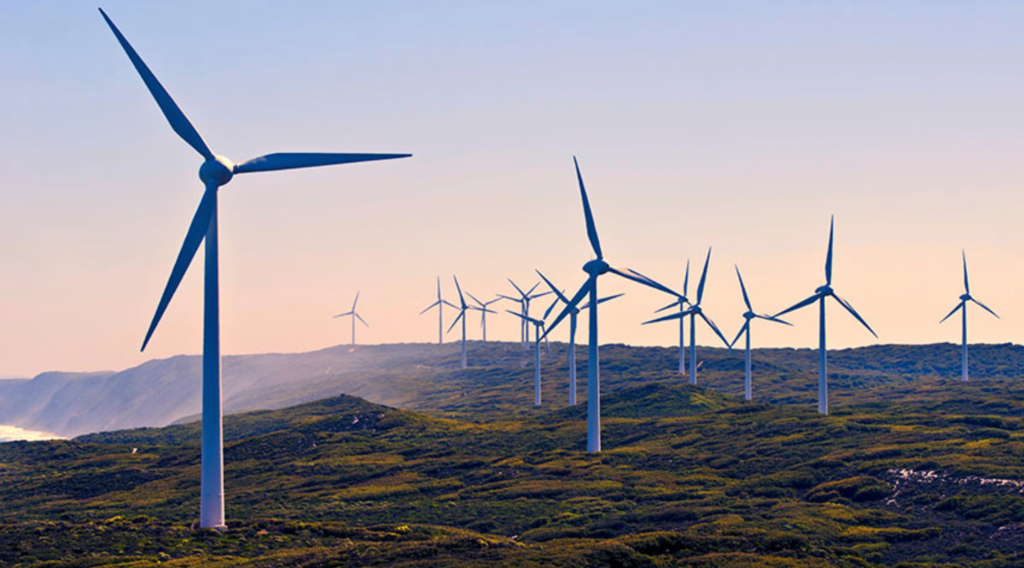Article by Michael Mazengarb courtesy of Renew Economy

A plan to build a massive renewable energy hydrogen project of up to 26GW of wind and solar capacity in Western Australia’s Pilbara region is set to enjoy a fast-tracked approvals process, after securing ‘major project status’ from the federal government.
The Asian Renewable Energy Hub proposes to invest more than $50 billion in establishing a massive renewable energy export hub in the Pilbara region, which would include the export of wind and solar energy to Asia, through the production of renewable hydrogen fuels and ammonia.
The federal government has granted the massive renewable energy project ‘major project status’, which recognises the national significance of the project and will ensure the project developers are provided additional support to see the project fast-tracked through the approvals process.
The project had already received environmental approval from the Western Australian state government for the first stage of the project, which approved the construction of 15GW of wind and solar capacity.
The company said that it had already submitted an application for the full 26GW development, after the first stage’s approval from the Western Australian Environmental Protection Authority. The project would be the largest energy project ever undertaken in Australia and would rank amongst the largest in the world.
The revised proposal has removed an original plan to send renewable electricity to Asia via an undersea cable, and will instead focus on the use of renewable electricity for the production of hydrogen and ammonia, including the construction of a desalination plant.
The project’s developers, a consortium that includes Intercontinental Energy, Australia’s CWP Renewables, Pathway Investments and turbine manufacturer Vestas, said that the progress being made towards planning and environmental approvals would enable the start of negotiations with potential investors and off-takers.
They also said that the sheer scale of the project, along with falling costs of wind and solar technology and electrolysers, meant that the project was likely to already meet the Technology Roadmap target of $2 a kilogram, a key level where renewable hydrogen is competitive with other technologies.
“These are huge steps towards achieving the full potential of our ground-breaking project, we now have a clear path to make the Asian Renewable Energy Hub a reality,” the Asian Renewable Energy Hub’s project director Brendan Hammond said.
“We look forward to working closely with the Western Australian and Federal Governments to entrench Australia’s status as a world leader in renewables and to deliver the world’s largest new power facility – and it’s green.”
“It sends a strong signal to everyone involved, including potential customers and investors, that our project is at the forefront of an emerging green hydrogen industry for Australia, and the opening of a massive new export market to the fast-growing Asian economies to our north.”
The project is expected to create more than 20,000 direct and indirect jobs throughout its construction, as well as supporting more than 3,000 jobs once operational.
“The Asian Renewable Energy Hub has the potential to transform the East Pilbara and neighbouring Broome shire and to contribute to a major new export industry for Australia,” minister for industry, science and technology Karen Andrews said when announcing the major project designation.
“Not only will the plant be able to export at scale, it will also be able to supply industries in the region while creating new job opportunities and economic growth.”
The project’s developers previously told RenewEconomy that the expansion in the project’s scale was driven by the opportunities being presented in renewable hydrogen, that could see the zero-emissions fuel exported from Australia in the form of ammonia.
The project has also committed to supplying 3GW of renewable electricity to the local Pilbara region.
Founder of CWP Renewables, Alex Hewitt, said that it was encouraging to see both state and federal governments express confidence in the Asian Renewable Energy Hub, and the competitive advantage Australia has in clean energy exports.
“We are so pleased to have the confidence and support of the State and Federal Governments for our grand vision to establish a new green hydrogen-based industrial sector in Australia, drawing on Australia’s many natural advantages,” Hewitt said.
“We have world-leading renewables resources, an innovative and flexible labour force, and a stable investment environment for what will be the country’s largest-ever infrastructure build, generating thousands of new jobs in local manufacturing, technology development and export facilitation. This is exactly what the Government’s Technology Investment Roadmap envisages.”
Founder of the Hong Kong based Intercontinental Energy, Alex Tancock, said that the Asian Renewable Energy Hub would establish a new frontier for renewable energy in Australia, opening up the possibility for zero-emissions energy exports that could compete on cost with Australia’s fossil fuel exports.
“We are effectively creating a new industrial sector,” Tancock said. “The falling costs of wind and solar power, our carefully selected locations, and the vast scale of the facility we are building, all mean it’s inevitable that we will be able to produce green fuels that are cost competitive with fossil fuels.
“This will speed up the essential decarbonisation of energy intensive sectors such as shipping, aviation, resource extraction and chemicals. Today marks a historic breakthrough for renewables.”
The announcement comes just days after the $22 billion Sun Cable project, which is seeking to export solar power from the Northern Territory into Singapore, had earmarked a location for its 10GW solar project. The project has selected sites at the Newcastle Waters cattle station, located midway between Darwin and Alice Springs.
The Sun Cable project, which has received backing from the billionaire duo of Mike Cannon-Brookes and Andrew Forrest, is likewise planning to establish an undersea link between Australia and the Asian region and had also secured major project status from the federal government.
